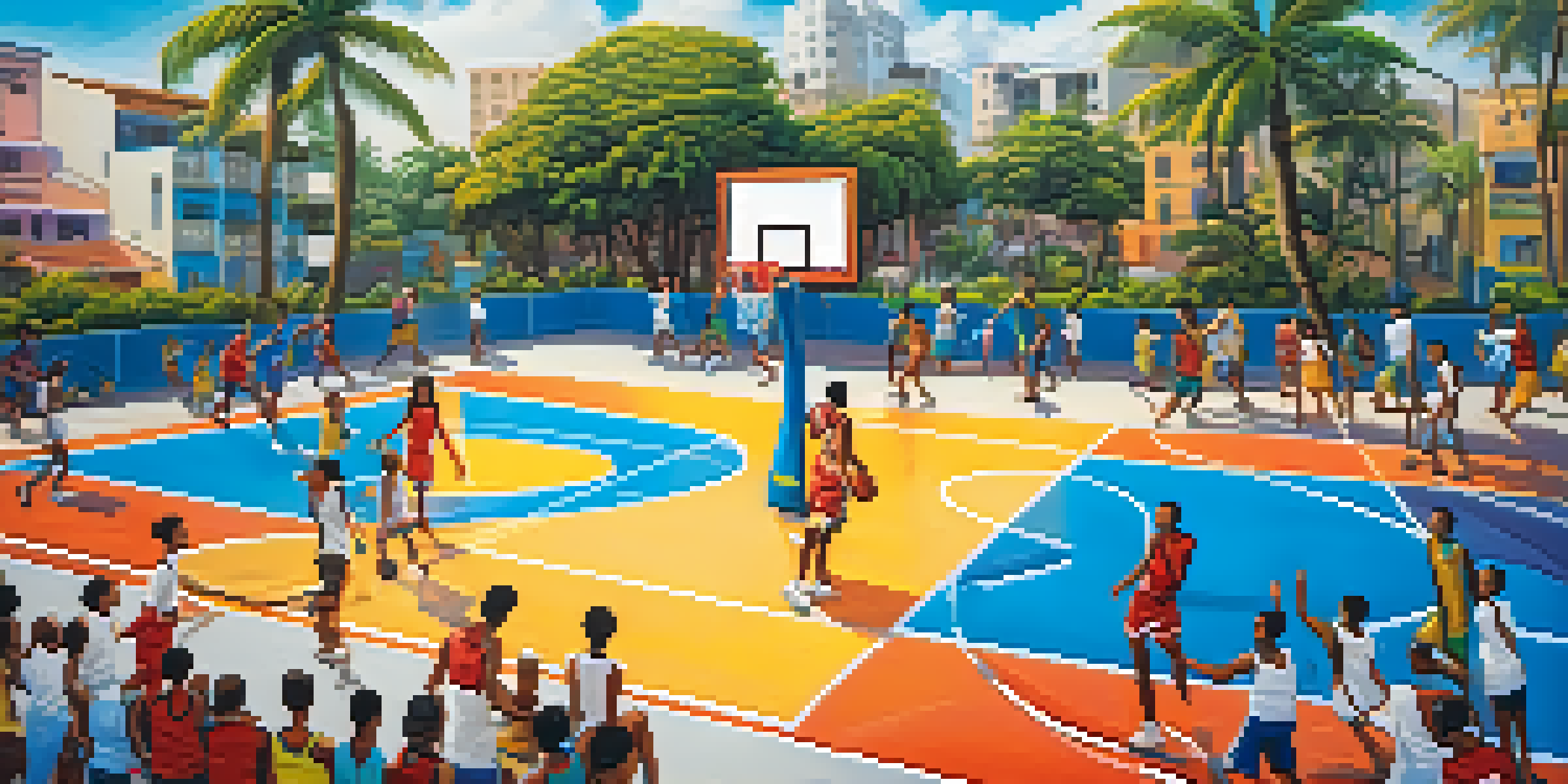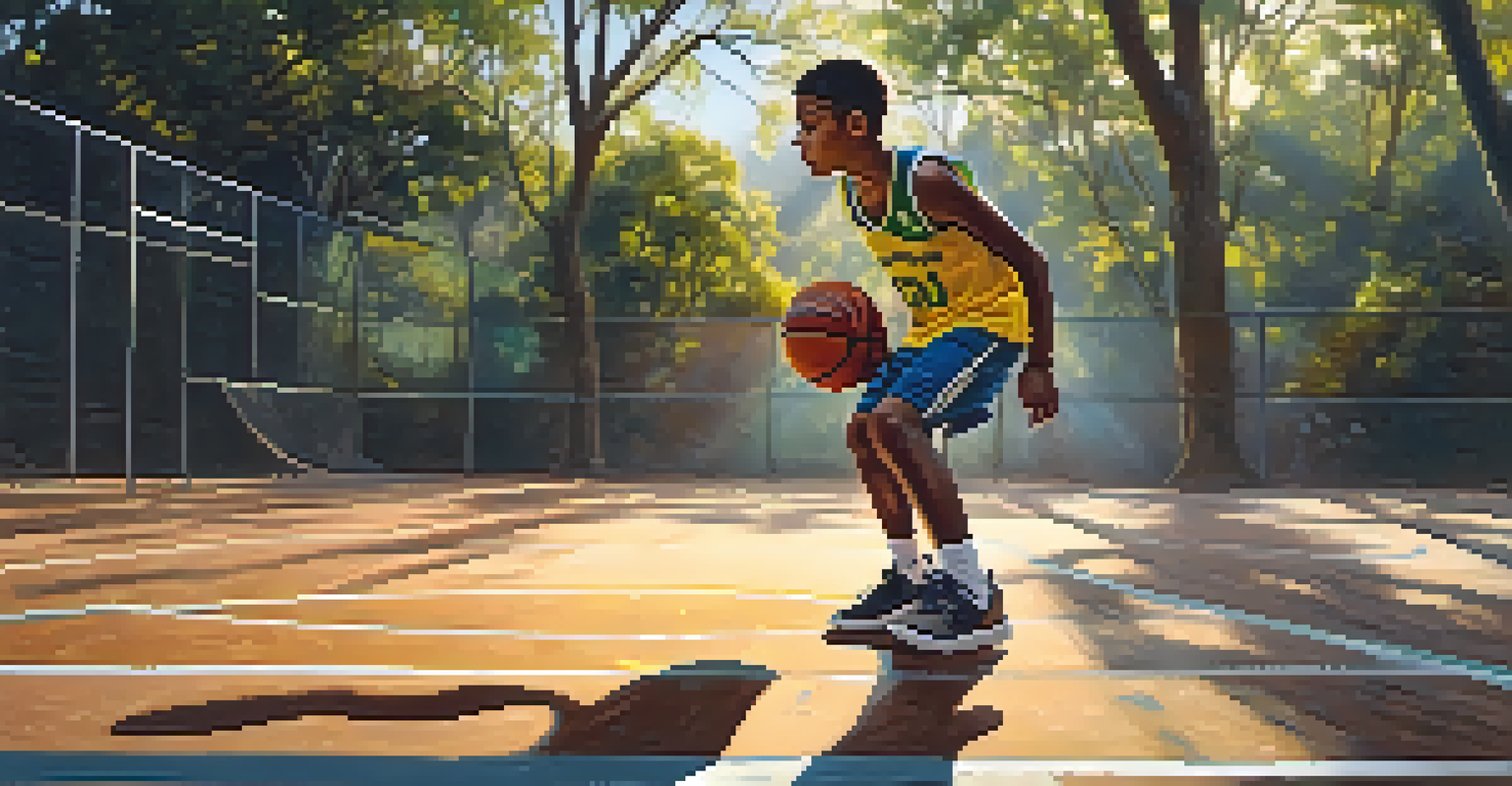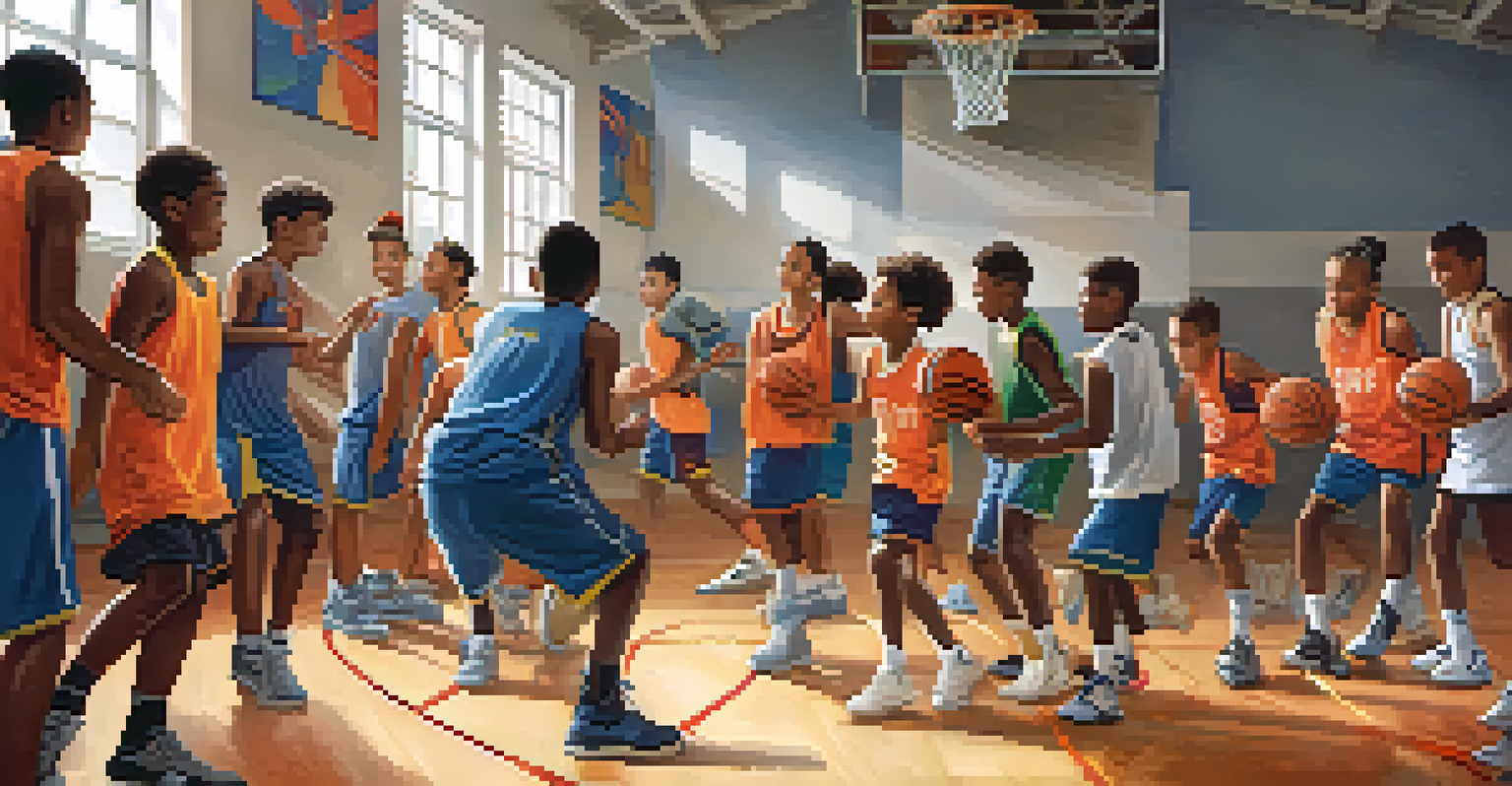Basketball in Brazil: Growth, Challenges, and Cultural Impact

The Rise of Basketball in Brazil: A Historical Overview
Basketball found its way to Brazil in the early 20th century, quickly becoming popular among urban youth. The sport's introduction coincided with the rise of public schools where basketball was embraced as a physical activity. By the 1930s, Brazil had established its first basketball federation, setting the stage for the country's professional leagues.
Basketball is not just a game. It is a way of life, a way to connect with others, and a way to inspire change.
In the decades that followed, Brazilian basketball began to flourish on both the national and international stages. The national team made its first appearance in the Olympics in 1936, and it wasn't long before they became a formidable force in international competitions. This growing reputation helped to spark interest and investment in the sport across the nation.
As we moved into the 21st century, basketball continued to gain traction, with new generations of players emerging from various regions. The sport's popularity was bolstered by significant media coverage and the rise of social media, allowing fans and aspiring athletes to engage more deeply with the game.
Cultural Significance of Basketball in Brazilian Society
Basketball in Brazil is more than just a sport; it's a cultural phenomenon that reflects the country's diverse social fabric. The sport has become a common ground for people of different backgrounds to connect, fostering community and teamwork. This sense of unity is especially evident in favelas, where basketball courts often serve as gathering spots for youth.

Moreover, basketball's influence extends into music and fashion, with players often becoming cultural icons. The sport has inspired rap songs, street art, and even fashion trends, showing how deeply intertwined it is with Brazilian culture. Celebrated players like Oscar Schmidt and Leandro Barbosa have not only succeeded on the court but have also made significant contributions to the cultural landscape.
Basketball's Cultural Impact in Brazil
The sport unites diverse communities, fostering teamwork and cultural expression through music and fashion.
Through grassroots programs and community initiatives, basketball is helping to address social issues by providing opportunities for youth. These programs promote discipline, teamwork, and leadership, while also creating pathways for young talent to enter professional leagues.
Challenges Facing Brazilian Basketball Today
Despite its popularity, Brazilian basketball faces several challenges that threaten its growth. One significant issue is the lack of financial support for grassroots programs, which are crucial for nurturing young talent. Without adequate funding, many aspiring athletes struggle to access training and facilities, limiting their potential.
The future belongs to those who believe in the beauty of their dreams.
Additionally, the disparity between urban and rural areas affects the sport's development. While cities may boast well-equipped courts and organized leagues, rural regions often lack basic infrastructure and resources. This uneven distribution creates an imbalance that hinders the overall growth of basketball in the country.
Furthermore, competition from other sports, such as soccer, often overshadows basketball. Soccer is deeply rooted in Brazilian culture, making it difficult for basketball to capture the same level of attention and support. Addressing these challenges will require strategic investments and a commitment to promoting basketball at all levels.
The Role of Brazilian Players in International Leagues
Brazilian players have made significant strides in international basketball, particularly in the NBA. Pioneers like Nenê and Anderson Varejão opened the door for future generations, showcasing Brazilian talent on one of the biggest stages in sports. Their success has inspired countless young athletes back home to pursue basketball as a career.
The influx of Brazilian talent into the NBA has also sparked interest in the sport domestically. Young players aspire to reach the same level, leading to increased participation in basketball programs across the country. This trend has the potential to create a cycle of success, with more players gaining exposure and opportunities.
Challenges in Basketball Development
Financial constraints and regional disparities hinder the growth of basketball, particularly for young talent in rural areas.
Moreover, these players often return to Brazil during the off-season to give back to their communities, participating in camps and clinics. This connection helps bridge the gap between professional leagues and grassroots basketball, ensuring that the next generation of players has the support they need to succeed.
Impact of Technology and Social Media on Brazilian Basketball
Technology and social media have revolutionized the way basketball is consumed and played in Brazil. Young players can now showcase their skills through platforms like Instagram and TikTok, gaining visibility and attracting attention from scouts. This accessibility has empowered athletes to take control of their narrative and build personal brands.
Additionally, online training resources and tutorials have made it easier for aspiring players to improve their skills. With a wealth of information available at their fingertips, young athletes can learn techniques and strategies used by professional players. This democratization of knowledge has the potential to elevate the overall level of play in Brazil.
Furthermore, social media has fostered a sense of community among fans and players. Online discussions, live streams, and fan interactions create a vibrant basketball culture that transcends geographical boundaries. As more Brazilians engage with basketball online, the sport's popularity continues to grow.
Grassroots Initiatives Supporting Basketball Development
Grassroots programs are vital for the growth of basketball in Brazil, especially in underserved communities. Initiatives like 'Basquete Sem Fronteiras' focus on providing access to training and competitions for young athletes regardless of their background. This commitment to inclusivity helps to level the playing field and discover new talent.
These programs often incorporate life skills and educational components, ensuring that participants develop not only as athletes but also as individuals. By emphasizing teamwork, discipline, and leadership, these initiatives prepare young players for both basketball and life beyond the court. The holistic approach fosters a generation of well-rounded individuals.
Future Growth Opportunities
Investments in grassroots programs and leveraging technology can enhance basketball's popularity and development in Brazil.
Moreover, partnerships between local organizations and international basketball entities can amplify these efforts. Collaborations often lead to resources, training facilities, and coaching opportunities, creating a more robust support system for aspiring players. Together, these initiatives contribute to building a sustainable basketball ecosystem in Brazil.
Future of Basketball in Brazil: Opportunities and Outlook
The future of basketball in Brazil looks promising, with numerous opportunities for growth and development. The increasing popularity of the sport among youth suggests a bright path ahead, especially if adequate support is provided. Investing in training facilities, coaching, and grassroots programs will be essential to harness this potential.
Additionally, the success of Brazilian players in international leagues can serve as a catalyst for the sport's growth. Their achievements inspire young athletes and attract attention from sponsors and media alike, creating a positive feedback loop. As more talent emerges, the national team can continue to compete on the world stage.

Finally, leveraging technology and social media can play a crucial role in the sport's evolution. By engaging fans and players online, basketball can cultivate a passionate community that supports the sport at all levels. Embracing these trends will be key to ensuring that basketball thrives in Brazil for generations to come.